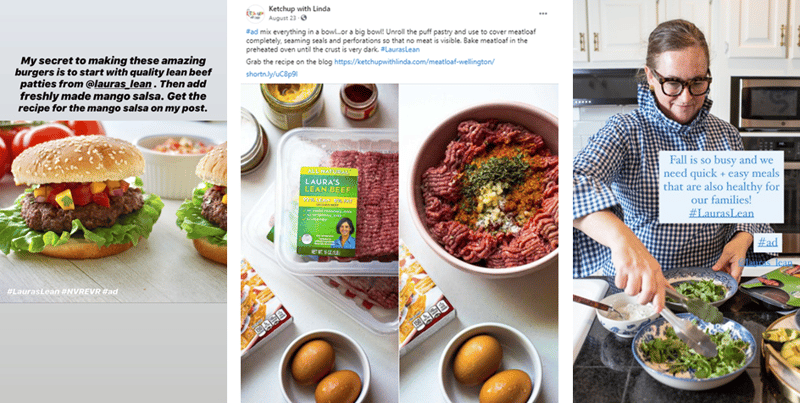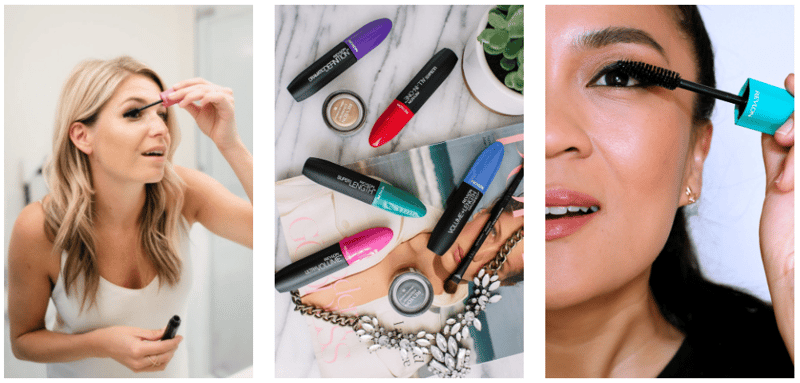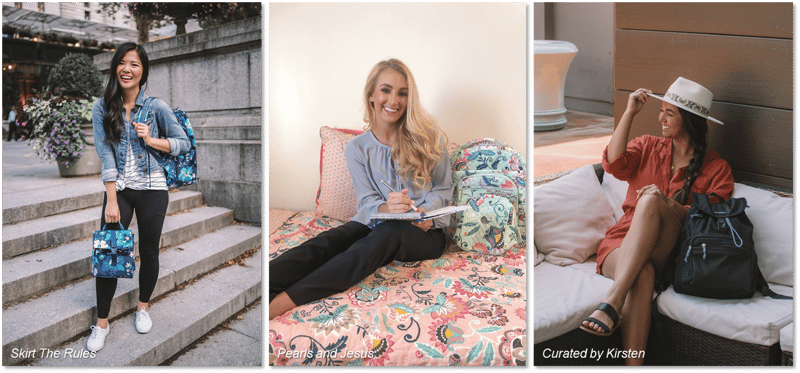Over the past 5+ years, we’ve done a lot of research on the best ways to measure the effectiveness of influencer marketing. We also focus almost exclusively on working with CPG brands and retailers, so the challenge of measuring brand impact via influencer marketing is one nearly all of our clients face.
.png?width=600&name=Feature%20Images%20(2).png)
The answer falls into three categories of measurement and the campaign set-up and execution that must follow to ensure the measurement is both possible and valid. Here is a breakdown, including pros and cons, of these methods.
1. BRAND LIFT
According to Neilsen (and Facebook who has a vested interest in the opposite being true) engagements such as likes, comments, clicks, etc. do not correlate with brand awareness, consideration, or sales. The #1 digital marketing metric that does is Ad Recall. This makes sense for CPG as having the brand and associated reasons-to-believe top of mind are likely to result in purchase when the need state exists. We can get to Ad Recall a few ways:
A. Optimizing for Facebook’s Ad Recall Metric – When running ads with your influencer created content, program your campaign to optimize for Ad Recall and monitor it regularly to ensure it's aligning with benchmarks.
Pro: This doesn't require your brand to pay any extra money other than which you've already set aside for media buying.
Con: This is just an estimate based on the way audiences interact with the ad content (based in actual research but not specific to your campaign’s content).
B. Templated Brand Lift Study – This can be achieved by partnering with a research company, such as Group RFZ, to conduct this kind of study. They expose a sample audience that mimics the campaigns target audience to influencer content and then ask that sample/exposed audience as well as a control audience questions to gauge aided and unaided brand awareness as well as purchase intent.
Pro: This is a relatively small investment to get data specific to the impact of content from the campaign.
Con: It’s templated and doesn’t provide a ton of strategy insight, more of a yes or no as to whether it worked. This type of study also requires additional funding.
C. Custom Brand Lift Study – This works similar to the templated study however, you have more control over the questions and can gain some consideration level insights by testing retention and value the audience placed on key messages as well. We've run this type of study with Group RFZ last year for and saw excellent results.
Pro: Your team gets valuable insights beyond "did it work or not" and is able to understand which key messages were most impactful.
Con: Regardless of the research partner, these studies can be costly.
2. SALES CORRELATION ANALYSIS
With this approach, you're able to compare actual sales data during a time period likely to be impacted by the influencer campaign to a benchmark. This can be done in a few ways:
A. Retailer vs Retailer – Focusing all efforts (key messages and targeted) toward a single retailer with the goal of driving sales at that retailer. You're then able to compare how sales lift at the target retailer compared to the sales lift at other, similar retailers (you’d want to look in the same channel – drug channel, big box, etc.) to analyze campaign effectiveness.
Pro: You can get a guess at actual sales lift driven by the campaign.
Con: Some brands prefer not to go this route to prevent showing retailer preference. Also, if your product could be considered a "basket building product" (i.e., you don’t always make a specific trip to get it, it goes on the list for the next time you go to _____ store) it’s likely any nationally targeted campaign is going to have spillover into other retailers even if all the messaging focuses on just one.
B. Region vs Region – Similar to the retailer vs retailer approach, you focus your efforts on targeting the campaign to reach a segment of the country, then compare sales lift in that region to other regions. We've previously done with with Tyson, supporting the launch of a new product.
Pro: No concern about one retailer getting upset that you promoted another.
Con: Geo-targeted campaigns are less efficient. You’re paying a premium CPM to narrow your audience. Additionally, you have to be able to get the sales data separated out by region from the retailers, which is a) usually costly and b) a challenge as all retailers organize their regions differently for reporting purposes so the data will never be perfectly clean.
C. Time vs Time – Similar to the tactics above, however you'll be focusing your efforts on comparing your influencer marketing campaign to a benchmark time period. For example, in a program we ran with Revlon, the client previously ran a Buy-One-Get-One (BOGO) offer on Sunday. When we ran our program, we supported the same BOGO offer and ran the program on the same day of the week. The client worked to ensure the only difference in the campaigns was that during our program, influencers were activated.
Pro: The challenges of region vs. region and retailer vs. retailer are resolved.
Con: It’s nearly impossible to find a perfect benchmark period in which everything in the market was exactly the same with the exception of the influencer component.
3. CONVERSION ANALYSIS
With this approach, you're working to directly tie individual sales to the campaign. Everything within the campaign should be optimized to drive an online conversion of some sort. There are two ways to do this:
A. Conversion Optimization – Media placements should be optimized to drive high performing traffic to the website, which results in CPMs increasing by ~3-4x. You must have the Facebook Pixel or Conversions API installed on your brand website and set up to return data on a variety of events including landing page views, adds to cart, conversions and conversion value.
Pro: You must have an eComm experience that you control to measure sales, similar to our campaign with Vera Bradley. Alternatively, you can make coupon downloads the conversion goal instead, which is the approach we’ve taken in the past for non-eComm brands like Hills Bros.
B. Influencer-level Conversion Tracking – Each influencer is given a customized promo code to promote that you can then use to track the sales they drove by looking at purchases that used that promo code.
Pro: You're able to track direct sales attributable at the influencer level.
Con: The promotion must be compelling enough to drive action in the moment, like an impulse buy.
If you have questions about any of the measurement methods listed above, feel free to contact our team today. Alternatively, we encourage you to stay up-to-date on the latest news and trends in the influencer marketing space by subscribing to our bi-weekly newsletter, The Spin, below.
Subscribe to The Spin Newsletter
-1.png?width=504&height=360&name=Carusele%20logo%20%C2%AE%20logo%20Color%20(2)-1.png)


